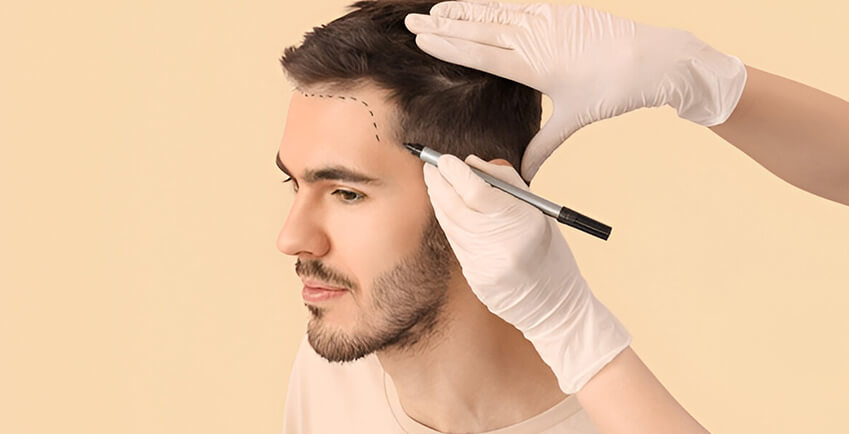Hair loss can be emotionally devastating. When you look in the mirror and see a receding hairline or thinning crown, the promise of a full head of hair through transplant surgery can seem like a miracle solution. But before you book that appointment, let’s talk about something crucial that many clinics don’t emphasize enough: hair transplant safety.
I am not someone who has performed thousands of procedures over the past 7-8 years, but I’ve seen both the incredible transformations and the unfortunate complications that can arise when safety protocols aren’t followed. Today, I want to share the truth about hair transplant risks and how you can protect yourself.
Is Hair Transplant Safe or Not? The Reality Check
The short answer is: hair transplant can be safe, but it’s not risk-free. Like any surgical procedure, it carries potential complications that every patient should understand before making a decision.
The key lies in choosing the right surgeon, the right clinic, and understanding what you’re getting into. When performed by qualified professionals in proper facilities, early grade baldness in middle aged men with no comorbid disorders, hair transplant procedures have high success rates. However, the growing popularity of these procedures has unfortunately led to an increase in unqualified practitioners offering cheap alternatives – and that’s where the real danger lies.
Understanding Hair Transplant Side Effects
Let’s be honest about what can go wrong. Hair transplant side effects range from minor inconveniences to serious complications that can affect your health and appearance permanently.
Common side effects include:
- Swelling around the forehead and eyes that can last several days
- Temporary numbness in the treated areas
- Itching and discomfort during the healing process
- Temporary shock loss, where existing hair falls out due to trauma
More serious complications can include:
- Severe bleeding during or after the procedure
- Nerve damage leading to permanent numbness
- Unsightly scarring that’s worse than the original hair loss
- Unnatural-looking results that require corrective surgery
The most concerning issue I’ve encountered is hair transplant infection risk. When proper sterilization protocols aren’t followed, patients can develop serious infections that not only compromise the results but can also lead to systemic health problems.
The Hidden Risks of Hair Transplant Surgery
Beyond the obvious physical risks, there are several risks of hair transplant surgery that patients often don’t consider:
Psychological Impact: When results don’t meet expectations, the emotional toll can be significant. I’ve seen patients become deeply depressed when their “new look” doesn’t match their hopes.
Financial Burden: Poor results often require expensive corrective procedures. What starts as a one-time investment can turn into years of additional surgeries.
Career and Social Implications: Obvious scarring or unnatural results can affect professional and personal relationships in ways patients don’t anticipate.
The Cons of Hair Transplant: What Clinics Won’t Tell You
While marketing materials focus on success stories, let’s discuss the cons of hair transplant that you need to know:
It’s Not a One-Time Fix: Hair loss is progressive. Even after a successful transplant, you may need additional procedures as you continue to lose hair in other areas.
Limited Donor Hair: You only have a finite amount of donor hair. Poor planning in early procedures can leave you without options for future treatments.
Time-Intensive Recovery: Despite what some clinics suggest, proper healing takes months, not weeks. You’ll need to avoid strenuous activities, swimming, and even vigorous hair washing for extended periods.
No Guarantee of Success: Even with the best surgeons, there’s no guarantee the transplanted hair will grow as expected.
Maintenace: Regular maintenance with oral and topical supplements and PRP/GFC therapy.
Hair Transplant Clinic Hygiene Standards: Your First Line of Defense
One of the most critical factors in ensuring safety is hair transplant clinic hygiene standards. Unfortunately, not all clinics maintain the same level of cleanliness and sterility.
Red flags to watch for:
- Reused instruments that should be disposable
- Unsterilized equipment
- Lack of proper ventilation systems
- Staff not following hand hygiene protocols
- Absence of proper medical waste disposal
What to look for in a safe clinic:
- Operating rooms that meet medical facility standards
- Proper sterilization equipment and protocols
- Staff wearing appropriate protective equipment
- Clear infection control policies
- Regular facility inspections and certifications
Medical Negligence in Hair Transplant Surgery: Protecting Yourself
Medical negligence in hair transplant surgery is more common than you might think, especially in the unregulated market of cosmetic procedures. Common forms of negligence include:
- Performing procedures without proper medical training
- Failing to assess patient suitability for surgery
- Not explaining risks and obtaining proper informed consent
- Using outdated or inappropriate techniques
- Inadequate post-operative care and follow-up
Qualification of Hair Transplant Surgeon: What to Look For
The qualification of hair transplant surgeon is perhaps the most crucial factor in ensuring your safety. Here’s what you should verify:
Essential Qualifications:
- Board certification in plastic surgery or dermatology
- Specific training in hair restoration techniques
- Active medical license in good standing
- Practicing in a medical facility with proper licensing and infrastructure
Experience Matters:
- Ask how many procedures they’ve performed
- Request to see before and after photos of their work
- Inquire about their complication rates
- Check online reviews and patient testimonials
Red Flags:
- Practitioners who aren’t medical doctors
- Doctors operating outside their specialty without proper training
- Clinics that refuse to provide surgeon credentials
Making the Right Choice: Your Safety Checklist
Before committing to any hair transplant procedure:
Research thoroughly: Don’t rush into a decision based on price or marketing promises. Take time to research multiple surgeons and clinics.
Get multiple consultations: Different surgeons may have varying approaches and recommendations. Compare their assessments and recommendations.
Ask the tough questions: Don’t be afraid to ask about complication rates, revision policies, and what happens if things go wrong.
Verify credentials: Independently verify your surgeon’s qualifications through medical board websites.
Understand the full cost: Factor in potential revision surgeries and long-term maintenance.
Penultimate Point:
Is It all about Patient questions, what about Surgeons? The more Experienced the surgeon, the more frequently he should practice “TO SAY NO”. Younger age , higher grade baldness, comorbid disorders and higher expectations are a huge red flags for the Surgeon.
The Bottom Line
Hair transplant surgery can be a life-changing procedure when done correctly by qualified professionals. However, it’s not a decision to take lightly. The key to a safe and successful outcome lies in choosing the right surgeon, understanding the risks, and having realistic expectations.
Remember, the cheapest option is rarely the best when it comes to surgery. Your safety and results depend on the expertise of your surgeon and the standards of the facility where your procedure is performed.
If you’re considering a hair transplant, take the time to do your homework. Your future self will thank you for making an informed decision rather than a hasty one. After all, when it comes to your health and appearance, there are no shortcuts to safety.
The journey to restored hair should never compromise your health or safety. Choose wisely, and you’ll be much more likely to achieve the results you’re hoping for.
Author: Dr Vikram Natraj
Disclaimer : The opinions here are personal views of the authors. IAAPS is not responsible. All members may not have the same scientific view point

